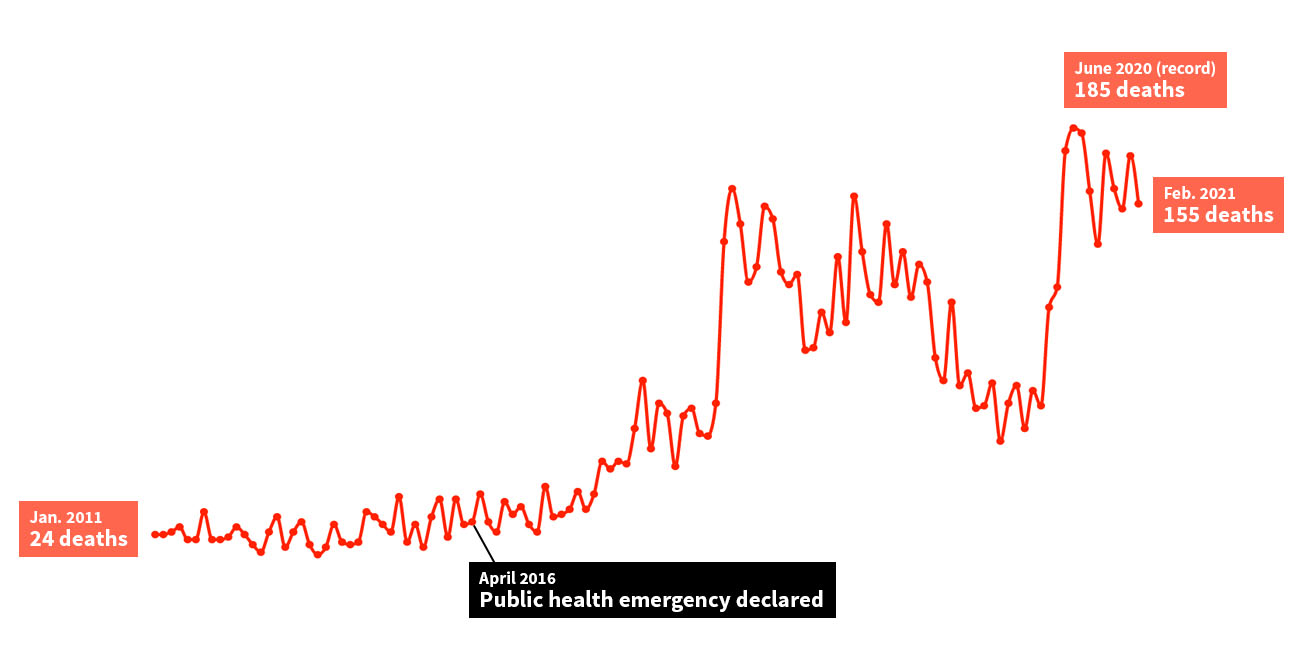Five years ago today, British Columbia declared a public health emergency in response to rising overdose deaths. It was the first time in the province’s history the power was used.
“The recent surge in overdoses is a huge concern for us,” said then-health minister Terry Lake. “We have to do what’s needed to prevent overdoses and deaths.”
But in the last half decade, the BC Liberal and NDP governments have failed to do what’s needed in the face of an increasingly poisoned supply.
The circle at the top of this story is a graphic depiction of that failure. It’s made up of 6,853 dots. Each one represents a person who has lost their life since the emergency was declared. And, indirectly, represents family and friends devastated by the preventable death of someone they cared about.

The emergency declaration was announced in April 2016. That month, there were 72 deaths. The next year, the average monthly toll was 124. In 2018, it rose again to 129.
In 2019, there was some progress and average monthly deaths fell to 82 — still 14 per cent higher than when the emergency was declared and government pledged to do what was needed to end overdose deaths.
The pandemic brought increasingly poisoned drugs and greater vulnerability for people who used substances. Last year, on average, 144 people died each month — twice the number in the first month of the emergency.
Governments have defended their plans, promised more action, announced new initiatives.
But as activist and journalist Garth Mullins told The Tyee, the numbers don’t lie.
“There’s a very easy metric to see if your program is working, because it’s written in the coroner’s report.” ![]()
Read more: Health, Rights + Justice
















Tyee Commenting Guidelines
Comments that violate guidelines risk being deleted, and violations may result in a temporary or permanent user ban. Maintain the spirit of good conversation to stay in the discussion.
*Please note The Tyee is not a forum for spreading misinformation about COVID-19, denying its existence or minimizing its risk to public health.
Do:
Do not: